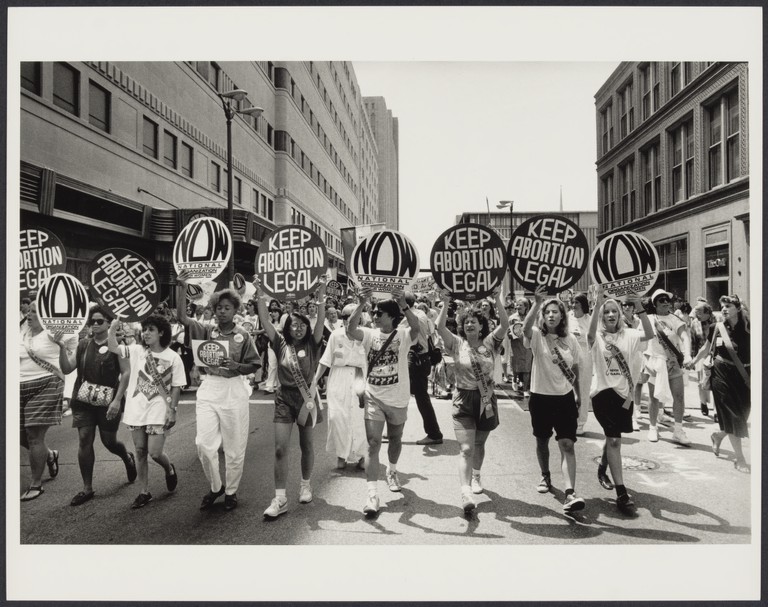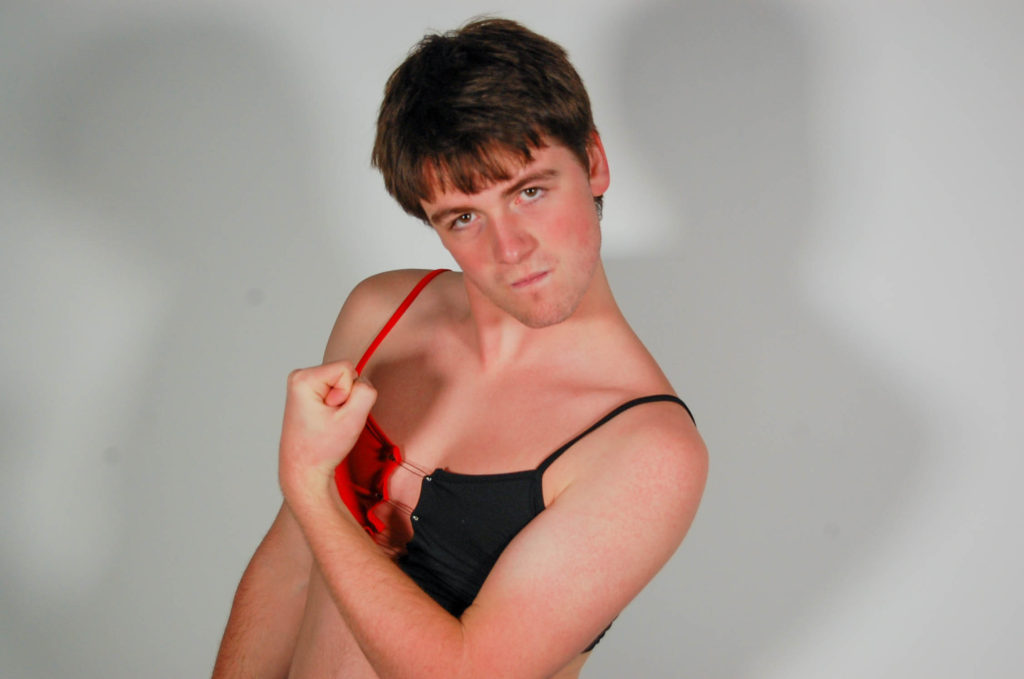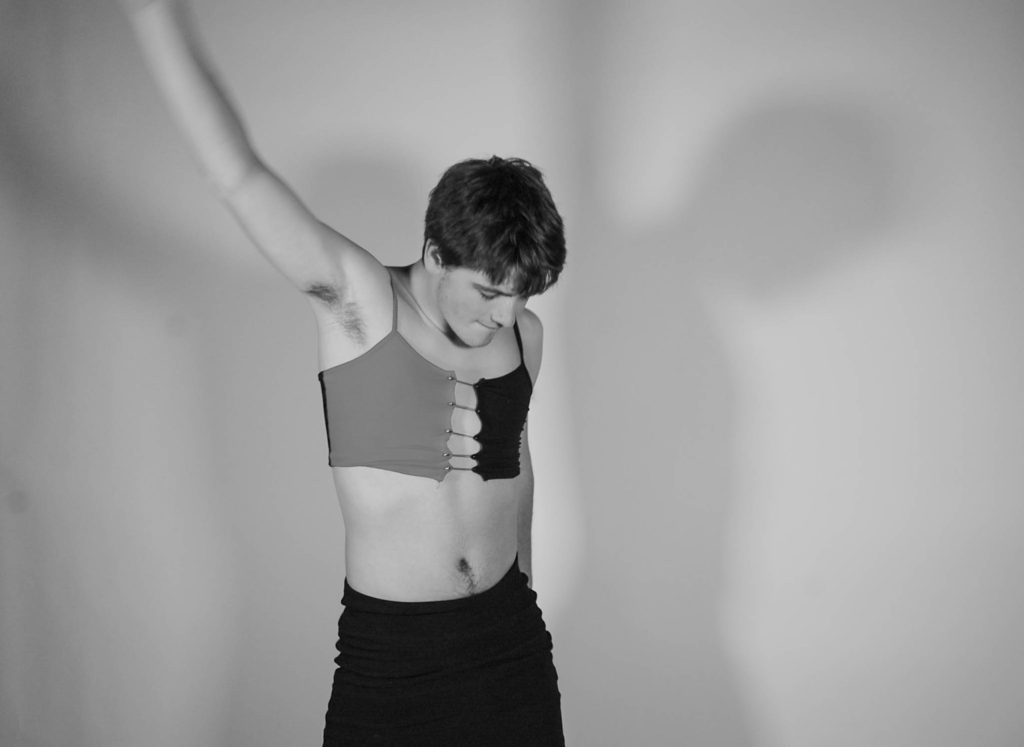In what way have Mary Ellen Mark and Laia Abril portrayed women’s mental and physical health.
“I remember learning that society had mandated that getting my period should remain a secret. The same ritual that was supposed to symbolize that I had “become a woman,” came with an unbearable pain that was normalized.”
Abril, L. (2021) Menstruation Myths.
Menstruation is an example of one of the many things that women must go through; yet keep it concealed due to society’s opinion on it. Women have been stereotyped to be accommodating and emotional, this could easily be interpreted as weak. Women grow up with this stigma and therefore have been known to be victimised by others. This has been proven with statistics provided by the UK government, let alone the rest of the world. Laia Abril is known for focusing on things that women could go through at some point in their life. Her project History of Misogyny include the topics: rape, abortion, periods, eating disorders and sexuality. Her images are always raw to show the true feelings and experiences of going through these situations; for rape she focused solely on objects that can be connected to the subject. This form of photography helps engrave the reality of things in people’s minds. Mary Ellen Mark has done a range of work, including being an associate producer for the film American Heart in 1992 as well as creating many photo books, all seemingly focusing on social minorities. Her work over the years has helped her accumulate many awards which she began to receive in 1980 for her work Mother Theresa to her most recent award in 2014 for an outstanding contribution to photography award. Both women have showed the public what life is like for others who could be counted as less fortunate than themselves. They have inspired my work and I have tried to adopt their techniques and themes throughout my personal study. I want my work to be more informative than emotional. I want to reveal the realities of life for women.
The feminist movement took off when the Suffragettes began to fight for women being able to vote in the UK in the 1870s, this was known as first wave feminism. Once the First World War began, the men went off to war and the women had to stay behind and help work in factories and build bombs rather than staying in the house doing domestic work. This meant that when the war was over, women wanted to have more independence and get their own job away from the house, and their husbands. This became a popular opinion, the fact that women over the age of 30 in the UK in 1918 may have had a part in it also. The second wave in the feminist movement began in the 1960s and led to the 1990s during the anti-war protests. Instead of focusing purely on the gender inequalities, the second wave of feminists broadened those ideas onto sexuality, reproductive rights, domestic violence, marital rape etc. This was a huge deal as this time it was not only women protesting, but men also joined in as they saw the injustice in the world. This wave helped enforce the criminalisation of marital rape in 1994 (UK) as well as in 1965 (USA) the Griswold v. Connecticut Supreme Court ruling of 1965 prevented anyone from limiting a woman’s access to contraception or other methods of birth control. This ground breaking work done by historical movements has allowed Mary Ellen Mark and Laia Abril to create the work they wanted without anyone questioning whether they are the right people for the job.

The Oxford dictionary definition of documentary is “to document or record”. Documentary photography has been used to keep record of major events that happen worldwide. This includes civil wars, world wars, coronations, and even natural disasters. Photography is a way for information to be held in the mind without needing to remember key information such as dates and times, all you need to remember is the details of the image itself. It’s scientifically proven that images are registered better than words by the brain, this means that if an image is attached to a news article, you are more than likely going to remember the story because they remember the contents of the images and not necessarily the paragraphs of information that they just read. Therefore, photography is such an important part of life, we can process valuable information a lot easier, and it is often enjoyable unlike reading pages and pages of information. The term Documentary Photography can be seen as contradictory. Images can be interpreted in different ways which is the opposite of a documentary which states purely facts from whatever topic it is based on. For example, the image above of Miss Pankhurst being arrested could be interpreted in many ways. Her facial expression is not as emotive as someone would expect when being arrested for something you believe in. One would expect more of a commotion when someone is being arrested for fighting for basic human rights. She seems as though she is at peace with the fact that she is going to be locked up for an unknown amount of time. This contradicts with the fact that she is being held at the wrist by the police officer. He seems to be gripping her so tight that she is having to latch on to her pair of gloves. This is the danger of documentary photography, everything that was just explained was an opinion. No one knows what the circumstances of the situation unless they were there themselves. “We no longer believe that the photograph directly replicates the circumstances” (Wells 2003:16).
Laia Abril’s work is what some would deem abstract for the subjects that she is addressing. For example, On Rape has images of different uniforms, this helps explain to the world that what a woman or man wears is not the issue; it is the people who think it’s acceptable to do it that are the issue. You don’t need to be doing anything specific to be found in that situation, it’s solely the rapist that can tell you when it’ll happen; often it’s too late. In addition to this, Menstruation Myths is an amazing collection of images which help raise awareness of the stigmatism of the natural menstruation cycle. The colour theme of her images is red to symbolise blood. Blood in most circumstances is seen as one of the most important parts of the body, this is due to its lifesaving roles in the body. Yet when a woman is on her period it is seen as disgusting and something that shouldn’t be spoken about openly, even though almost every woman must go through it for forty plus years of their life. My favourite image she made is a silhouette of a woman and there are white dots going down the centre of her body as though it’s her spine and at the bottom of those dots, a female reproductive system highlighted. I feel as though the image had helped highlight the fact that every woman has a uterus, and almost every woman goes through it in their lifetime.

Abril’s work mainly consists of objects rather than people. I feel like she has done this so more people are able to relate to certain situations, rather than setting out a whole scenario for only a few people to link to. She did this because she knows that “the repercussions are most of the time psychological, so it’s very difficult to visualise it.” (Abril 2019) in response to the fact that rape is difficult to capture due to it being stigmatised. This shows that she is conscious of how she composes her images, to prevent any unnecessary pain towards the viewer. While doing this, she manages to show the fact that the women who are represented in her images are not victims, but survivors who are strong and able to take back control of their lives. She helps those who are viewing her images that nothing can stop you from being who you are and no matter what has happened in your life, you are strong enough to fight back.
“There is only one reason I’ve stayed a photographer for so many years. Photography is always challenging” Ellen Mark, M. (1998) American Photo.
Ward 81 is a book that haunts the minds of its viewers. The images have no notes which leaves the viewer predicting what has happened to the person on the page. The books itself is very monotone and simple and this was shown with a white border as the images displayed were often mounted. However, the images throughout are varied sizes and seem to have no pattern, this could have been done intentionally to help represent the instability of the women in the ward. As you flick through the book, the images become progressively more graphic and traumatic. Once the final images have been shown, the editing notes can be seen, this helps the viewer understand Ellen Mark’s thought processes when bringing all the images together. Her main inspiration was W. Eugene Smith, he is seen by many as one of the most important photographers in the development of the editorial photo essay. The work that inspired Mark was the Country Doctor, one of Smith’s famous pieces of work.

W. E. Smith’s “Country Doctor”
Mary Ellen Mark herself, was an inspiration to many. The only reason that Ward 81 happened was because she was a photographer on the set of One Flew Over the Cuckoo’s Nest; it was filmed on an empty ward in Oregon State mental institute. Once the film had been released, Mary Ellen Mark returned there in 1976 and stayed in the hospital for six weeks in an abandoned ward next to the women’s metal ward. The women who were in there, were a danger to either themselves or someone else and needed to be under strict supervision. Mark was able to highlight the fact that the brain is a mysterious organ, and it only takes one person’s opinion to be deemed insane. Ward 81 was created to show the world how the supposedly insane live from an outsider’s opinion. The raw images highlight the fact that the women were sometimes shocked with electrical currents when their behaviour wasn’t up to someone’s standards. Everything in that ward was created because of someone’s opinion. Mary Ellen Mark allowed people to see the true story of life. She wanted people to see the model’s true self and not the barrier they put up for everyone else. The most amazing thing about Ward 81, is the unpredictability of it; this is due to the fact even she didn’t know what the women would be doing that day. This is since their own brain has taken over, they could no longer function as a stereotypically normal person, and became a danger not only just to themselves but also society. However, there is a sense, as you get further into the book, of familiarisation and a connection between the camera and the women.

As well as Ward 81, Mark created her book, STREETWISE as well as a book about Indian women who had gone into the occupation of prostitution, called Falkland Road: Prostitutes of Bombay. These books were created and further showed the true lives of others. Mark doesn’t censor her images unlike the press, this helps show the world that the human body is beautiful, and no two bodies are identical. The world nowadays only highlights the supposed perfections in life and hides the things women having to go through, such as prostitution, just so they can have food and water and pay bills. Mark showed the world that no woman is the same, as well as showing a joint injustice the world shows to women because of our sex. Although documentary photography is never created in a malicious way, some people, such as Martha Rosler, believe that the fact that some people who do not intervene with what was happening in the images they took is a crime against humanity. “The site of victim photography in which the victims, insofar as they are now victims of the camera” (Rosler 1981). This highlights the fact that when people are being photographed in certain situations, they could be seen as trapped. For example, in Falkland Road, there are images of teens who are prostituting their bodies, which is illegal and can be seen as immoral if not stopped. In addition to this, in Ward 81, the image 300B-069-011 is of a woman surrounded by nurses with what seems to be a lollipop stick in her mouth, this suggests that she is going through pain, surely one would assume that, that moment in time was not the best to be interfering in whatever the patient was going through. This supports Rosler’s opinions, Mary Ellen Mark could have tried to stop the young girls putting themselves in danger by selling their own bodies to people who could potentially put them in danger both physically as well as mentally.

For my personal study, I have worked mainly in portraiture. I have focused on the theme of secrecy and wanted to incorporate the phrase “see no evil, speak no evil, hear no evil”. I wanted this to symbolise the deafening silence of assault victims who are too afraid to speak up. Most of my images are in black and white, like Mary Ellen Mark’s work. Black and white is often used as a phrase which has connotations of simplicity and history as historical images are stereotypically in black and white. This contradicts the topic of my project. Mental and physical health is complex, there is rarely a definitive answer to most queries that are brought forward. In addition, I have taken inspiration from Laia Abril’s work by taking images of objects which may seem simple but the more you look at it, the more meaning the object begins to have. Both Ellen Mark and Abril take images that, at first glance, may not seem like they have much meaning, but the longer they are looked at, the true meaning of the images becomes clearer.
I addition to Ellen Mark and Abril, Jo Spence is an inspiration to my work. She used photography as therapy, and this started because she was diagnosed with breast cancer. She documented the stages of her life whilst living with the disease as well as fighting against the stereotypes of what a woman’s body should look like. This is important to note as she had to make the decision on whether she would have a mastectomy or not. A mastectomy is a major operation for a woman to go through as breasts are always associated with the female image. In the end she only had tissue removed from the breast yet still wanted to show that you do not need to have a certain body part to be seen as a woman. At the end of the day, a breast is just tissues and fat that is stored in the body, not a symbol of femininity.

Both Abril and Mark help show their audience, that women are strong individuals and no matter what they go through, they are still women. This is especially important to them; their work have shown different sides of individuals who have gone through different things but still convey the same message of power and control. Both artists show some form of control whether it be positive, when the women regain confidence and go back to what they counted as normal before whatever happened to them occurred. Or negative, like the women in Ward 81 when sadly their own minds had taken over and trapped them in a mental institution for their own safety. Both points highlight the fact that Mary Ellen Mark and Laia Abril wanted to show their audience that the female body and mind are powerful. The female body will in one way, or another save itself from pain and grief and help mend itself, even if added help is needed in the process.
Although both Abril and Ellen Mark have shown the power that women have, neither have shown women in a positive way. They both focused on why women must be strong due to negative situations rather than how women are strong in normal situations, like being mums and grandparents. The injustices shouldn’t be used to show the good in the world. The good in the world should be able to shine through without the need for bad things. Jo Spence used photography to show how much she grew; she took a bad thing that happened to her and made it positive. Photography is a powerful invention. It can be used for good but can also be manipulated into something it is not. It’s subjective yet provides facts. We need to use it to show the world that we are strong, not that we are weak.
























































